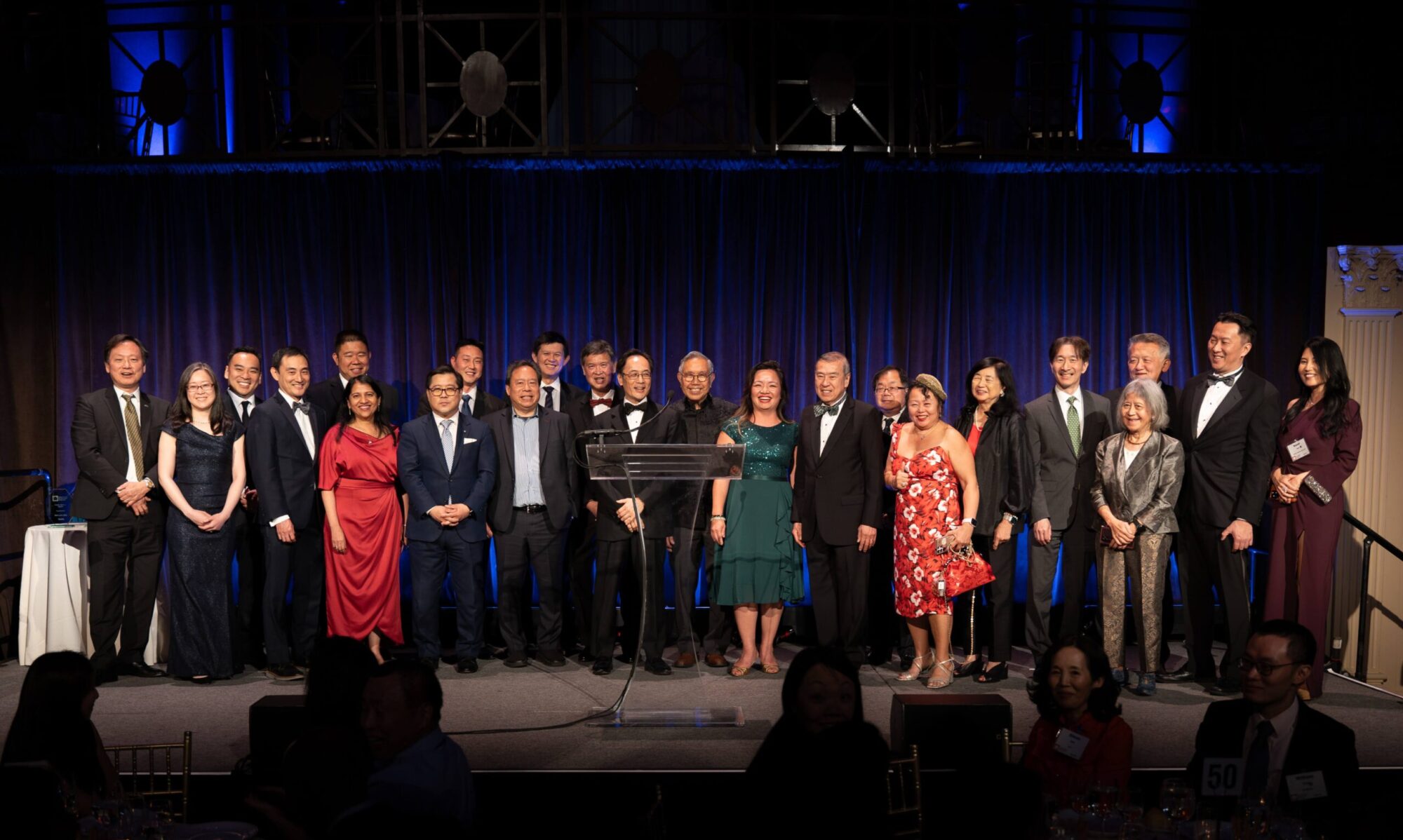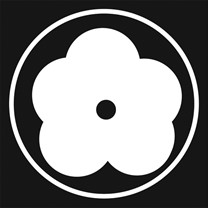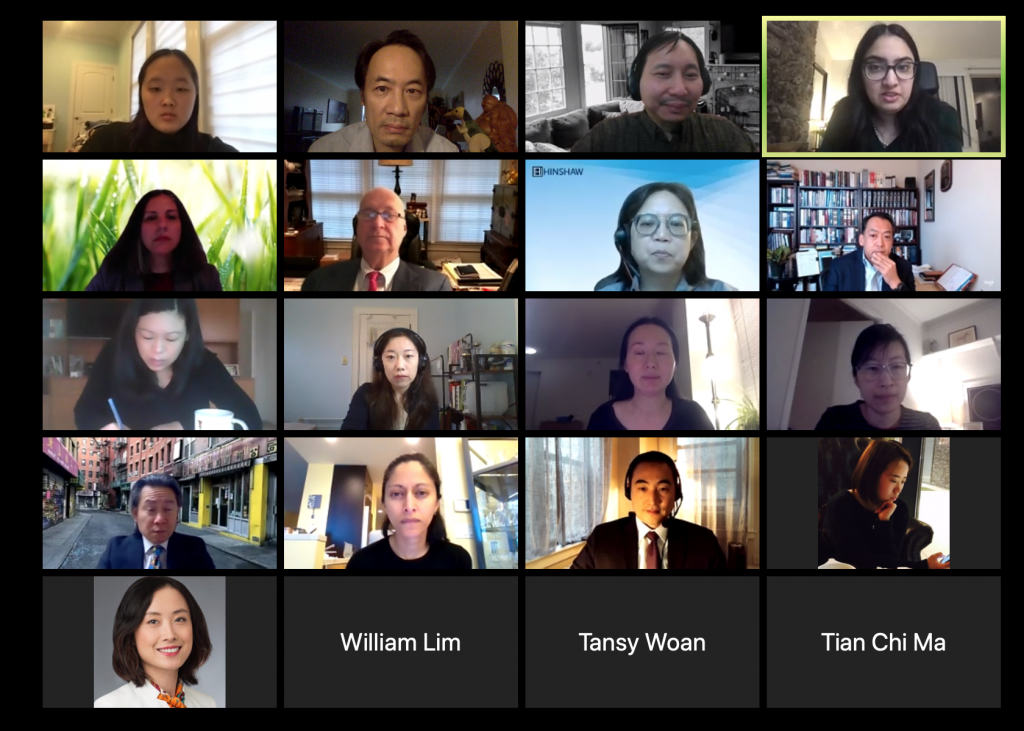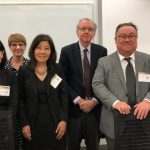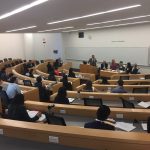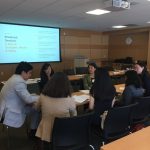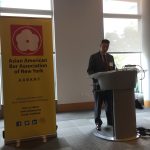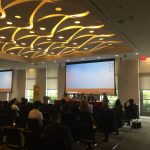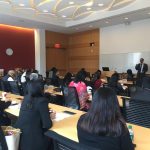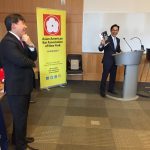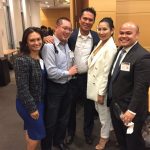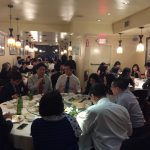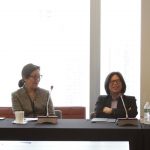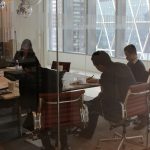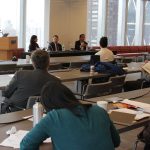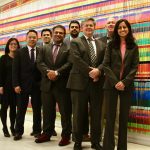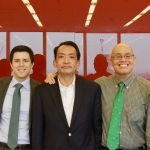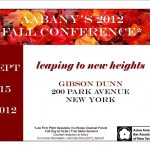On Saturday, September 27, 2025, AABANY hosted its 16th Annual Fall Conference, themed “Together We Thrive: The Power of Us!” at New York Law School. We extend our heartfelt gratitude to the school for hosting and supporting this gathering of the AAPI legal community. The day began with a buffet-style breakfast, during which attendees enjoyed coffee, pastries, bagels, and light bites, reconnecting with familiar faces and forming new connections.
Morning Sessions
From 9:00 AM to 10:30 AM, participants attended one of three CLE panels:
- Disability Rights and Asian American Identity — on the intersection of disability justice and AAPI identity
- Emerging Trends in Intellectual Property Infringement – U.S. and China — addressing cross-border challenges, enforcement, and strategic responses
- Long Lasting Attorney Partnerships – Strategies and Best Practices — providing insights on cultivating strong professional alliances


Next, the 10:45 AM to 12:15 PM block featured:
- Mediation and Cross-Cultural Considerations – on incorporating cross cultural considerations in mediation to improve client outcomes
- Working with Cooperators and Whistleblowers Across Cultures and Systems – building insider trust across cultural and institutional barriers in investigations
- Living in the New York City of Yes Housing for Everyone – a role-play tied to NYC’s City of Yes for Housing Opportunity (COHYO) proposals
Plenary Lunch & Trial Reenactment
At 12:30 PM, AABANY President Ben Hsing gave welcoming remarks to a packed Plenary Lunch Session, setting the stage for a live reenactment of the landmark cases Ozawa v. United States (1922) and United States v. Bhagat Singh Thind (1923). The reenactment dramatized two pivotal cases from the early 20th century in which the U.S. Supreme Court denied naturalization to two Asian immigrants—Takao Ozawa, a Japanese immigrant who argued that his light skin and cultural assimilation qualified him as “white,” and Bhagat Singh Thind, an Indian Sikh man who claimed to be Caucasian, citing Aryan ancestry, to assert eligibility for citizenship under the “free white person” requirement.


The emotional resonance of the performance was heightened by the fact that the judges in the reenactment were sitting Asian American and Pacific Islander (AAPI) women judges from state and federal courts. In the original cases, the highest court in the land had defined Ozawa and Thind as racially “other,” excluding entire communities from the privilege of citizenship. A century later, to see a full panel of AAPI women judges presiding from the bench—occupying the very institutional role that had once excluded people like Ozawa and Thind—was profoundly moving. The visual and symbolic contrast between the historical rulings and the present-day makeup of the judiciary underscored how legal institutions can be both instruments of exclusion and, over time, sites of transformation.


The reenactment was followed by a fireside chat with Professor Rose Cuison-Villazor moderated by Albert Tong, Student Outreach Committee Chair, which unpacked the historical and contemporary significance of these rulings in shaping concepts of citizenship, race, and identity. For many attendees, the moment crystallized both how far the community has come and how history continues to shape present realities.

Diversity Career Fair (DCF): Building Bridges Between Talent & Opportunity
Hosted by the Career Advancement Committee, the Diversity Career Fair (DCF) ran from 10:30 AM to 4:30 PM. Employers from public, corporate, nonprofit, and legal services sectors hosted informational tables and, in some cases, first-round on-site interviews. Attendees engaged in meet-and-greets, exchanged resumes, and connected with recruiters and legal professionals. The DCF served as a vital platform for career exploration and networking within the AAPI legal community, allowing attendees ample opportunities to explore career openings by visiting employer tables and meeting with representatives from approximately 20 public and private sector organizations and companies. On-site interviews took place with 5 of the participating employers, and resumes were collected from around 11 of the participating employers.
The Trial Advocacy Program (TAP): Hands-On Training and Mentorship from Eminent Trial Lawyers
Returning to the Fall Conference this year, TAP (Trial Advocacy Program) gave junior attorneys structured, mentored experience in key trial advocacy skills, with lectures, demonstrations, and exercises in opening and closing statements, as well as direct and cross-examinations. Participants prepared ahead of time, based on a mock trial problem, to present opening statements and conduct direct and cross-examinations before a faculty of experienced trial lawyers in breakout rooms, and received individual feedback and coaching. The program concluded with powerhouse closing argument demonstrations by two distinguished trial lawyers, Hugh Mo and William Campos, that captivated the audience. For video of Hugh Mo’s closing statement for the defense, courtesy of Mo Law Firm, see here.
Afternoon Sessions: Community & Innovation in Practice
From 2:30 PM to 4:00 PM, attendees had their selection of:
- Everyday Law for Community Empowerment Part 1 — Immigration, Employment, and Small Claims — key housing issues affecting the AANHPI community
- General Counsel Roundtable — leaders share career insights and strategy to cultivating skills for leadership
- Immigration Landscape in 2025 — discussing how evolving policy perspectives and immigration policy shapes immigration outcomes in 2025
From 4:15 PM to 5:45 PM, programming included:
- Everyday Law for Community Empowerment Part 2 — Housing, Trusts & Estates, Family Law – providing legal guidance for the AANHPI community for key housing and property issues.
- People Power! How Movement Lawyering Strengthens Democracy – exploring “movement lawyering” for legal professionals and law students interested in activism.
- Breaking the (Block)chain: Women at the Intersection of Crypto and Law — explain blockchain regulation, share industry insights, and offer guidance for aspiring lawyers.
These sessions continued the balance between community impact and emerging legal trends.


Link-Up Reception: Cultivating Professional Connections
One of the highlights of the day was the Link-Up Reception designed to foster meaningful engagement between law firm attorneys and senior in-house counsel seeking external legal services. Open only to invited in-house counsel, Gold-level sponsors and above, and representatives from 2025 Annual Dinner and Winter Soiree sponsors, the Link-Up Reception was a benefit offered to higher-tier sponsors, giving them increased exposure and direct access to in-house decision-makers.


By offering a direct and selective networking opportunity in a concentrated timeframe, the Link-Up Reception helped to enhance business development possibilities and strategic connections for participating in-house and outside counsel.
Cocktail Reception and Trailblazer Award Presentation
Following the Link-up reception, a general Cocktail Reception was held. The Cocktail Reception created a more open, celebratory atmosphere where attendees – including attorneys, law students, and pre-law students – could meet and mingle, after a full day of CLE and other programs. Attendees socialized, reflected, and strengthened connections over hors d’oeuvres and beverages. For many, the Cocktail Reception presented an excellent chance to connect with judges, seasoned practitioners, and peers in an informal setting — a space where mentorships may begin, collaborations were seeded, and the day’s theme of community and collective growth came to life in real time.
During the Reception, following remarks by AABANY President-Elect Varuna Bhattacharyya, Hon. Justice Jeffrey K. Oing, former Associate Justice, Appellate Division, First Department, introduced Justice Kim.
AABANY’s Executive Director Yang Chen then presented the Norman Lau Kee Trailblazer Award, honoring leadership, innovation, mentorship, and sustained community impact, to Hon. Judy H. Kim, Acting Justice of the Supreme Court, New York County. In her acceptance speech, Justice Kim highlighted the importance of mentorship and community. She recounted a particularly memorable time when an intern wrote to her, “You have shown me into a world that I thought I would never be able to be part of, and the gift that you have given me is priceless.” These words left a deep impact on everyone, reminding us of the importance of mentorship in this competitive world. This celebration closed the conference on a note of recognition, gratitude, and community.
We extend deep thanks to:
- More than 50 student volunteers from area law schools and colleges for providing wide-ranging support, including assisting with registration, logistics, and CLE sign-in and sign-out
- Albert Tong, Chair of the Student Outreach Committee, for coordinating the volunteers before and during the Conference
- Our sponsors, whose support made the Fall Conference and its educational, professional development, and networking opportunities possible
- All moderators, panelists, program chairs, and above all, attendees, whose participation embodied the theme – “Together We Thrive: The Power of Us!”
For more photos of the event, please visit the links below:
Thanks to our photographers, Jessie Zhou (AABANY legal intern), Tohir Hodjakulov, and Shiyun Zhang (student volunteers).
We hope the 2025 Fall Conference enriched your professional journey and strengthened the bonds within our AAPI legal community. Thank you for being part of this signature AABANY event — we look forward to seeing you at future programs!
